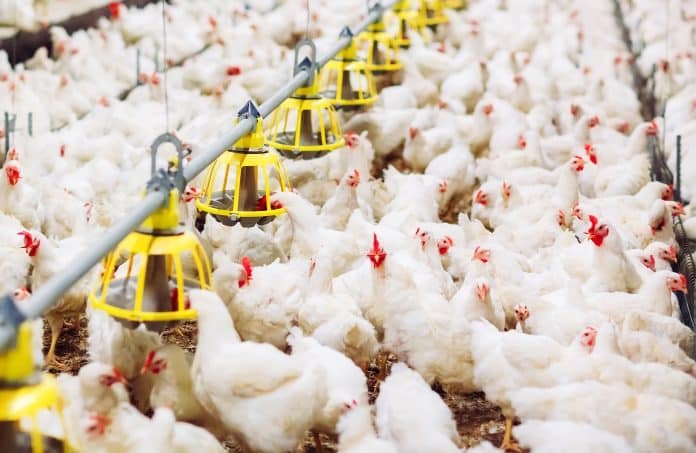Estimated reading time: 4 minutes
- Water is one of the single most important factors in the broiler production system, yet it is generally overlooked or disregarded.
- Adequate water supply is crucial, but ensuring that it can be delivered to the broilers as sufficiently as possible is imperative.
- There are several factors influencing the water intake of broilers, with the main ones being quality, taste, feed availability, disease or health issues and environmental temperatures.
- The taste and temperature of water can directly affect birds’ water intake, which will result in decreased feed intake and ultimately poor performance.
- It is highly recommended that when farming intensively with broilers in a controlled environment, water samples be collected and tested for bacteria and chemical analysis at least twice a year.
Water is one of the single most important factors in the broiler production system, yet it is generally overlooked or disregarded. As water has a direct effect on broilers’ performance, health, feed intake, temperature regulation and feed digestion, having a source of water that produces more than enough for the birds to utilise is unfortunately not enough.
Adequate water supply is crucial, but ensuring that it can be delivered to the broilers as sufficiently as possible is imperative – whether it be with water pumps for a constant flow rate or gravity fed from a ‘header tank’ above the house (this can be monitored daily by measuring water flow rate, which varies over time as broilers grow).
Water flow rate can be measured by pressing a measuring cylinder against the drinking nipple for 30 seconds. This value is then multiplied by two to get the water flow rate in mℓ/minute. The general rule of thumb is that a broiler consumes twice as much water as it does feed (at a ratio of approximately two to one).
Read more about poultry houses for broilers.
Figure 1: Water flow rate (mℓ/min).
| Age (days) | mℓ/minute |
| 0 to 7 | 60 |
| 7 to 14 | 70 |
| 14 to 21 | 80 |
| 21 to 28 | 90 |
| 28 + | 100 |
Water intake of birds
There are several factors influencing the water intake of broilers, with the main ones being quality, taste, feed availability, disease or health issues and environmental temperatures. Water quality factors to consider are pH, bacteria, oxidation and reduction potential (ORP), and the presence of minerals.
The pH of water for broilers should not be higher than 6,8 to 7. The presence of bacteria in the water can be assessed using a heterotrophic plate count, which is the number of bacteria in the water. Tests for faecal coliforms (faecal matter in the drinking water system) and Escherichia coli (E. coli), which is present in the intestines of animals as well as in the general environment, can be conducted for a general indication of the presence of sewage or animal waste in the water.
ORP should be measured at the borehole before and after water is treated, as well as daily at the front and back sections of each broiler house’s water lines. This is done to measure the ORP level, which indicates how clean the water lines are.
Bacteria feed on the oxygen in the water; therefore if the water line, which is an excellent breeding ground for bacteria, is filled with biofilm (algae in the water line), the ORP will be much lower than expected as compared to the water before entering the broiler houses.
Minerals are always found in water, but the presence of heavy or hard metals can be detrimental to broiler health, production and overall performance. Heavy metals include lead, copper, cadmium, arsenic, zinc, chromium, nickel and mercury, to name a few. These minerals contaminate underground water through surface seepage and movement of underground water, and can all cause toxicity and damage to organs.
Read more about which poultry breeds are suitable for broiler production.
Palatability and temperature
The taste and temperature of water can directly affect birds’ water intake, which will result in decreased feed intake and ultimately poor performance. Broilers have a keen sense of taste and are known to prefer more acidic-tasting water; therefore the treatment of water to keep its pH below 7 can aid in increasing performance. Water temperature should ideally be 20°C, but maintaining it at below 25°C will aid in increasing water and feed intake.
Twice yearly testing
It is highly recommended that when farming intensively with broilers in a controlled environment, water samples be collected and tested for bacteria and chemical analysis at least twice a year. This will be to your benefit because it will show exactly what you are feeding your broilers to keep them healthy and to maintain a high level of performance for many years to come. – Matthew Hughes, technical advisor, AFGRI Animal Feeds
For enquiries, send an email to Matthew Hughes at matthew.hughes@afgri.co.za or phone 079 515 4882.


